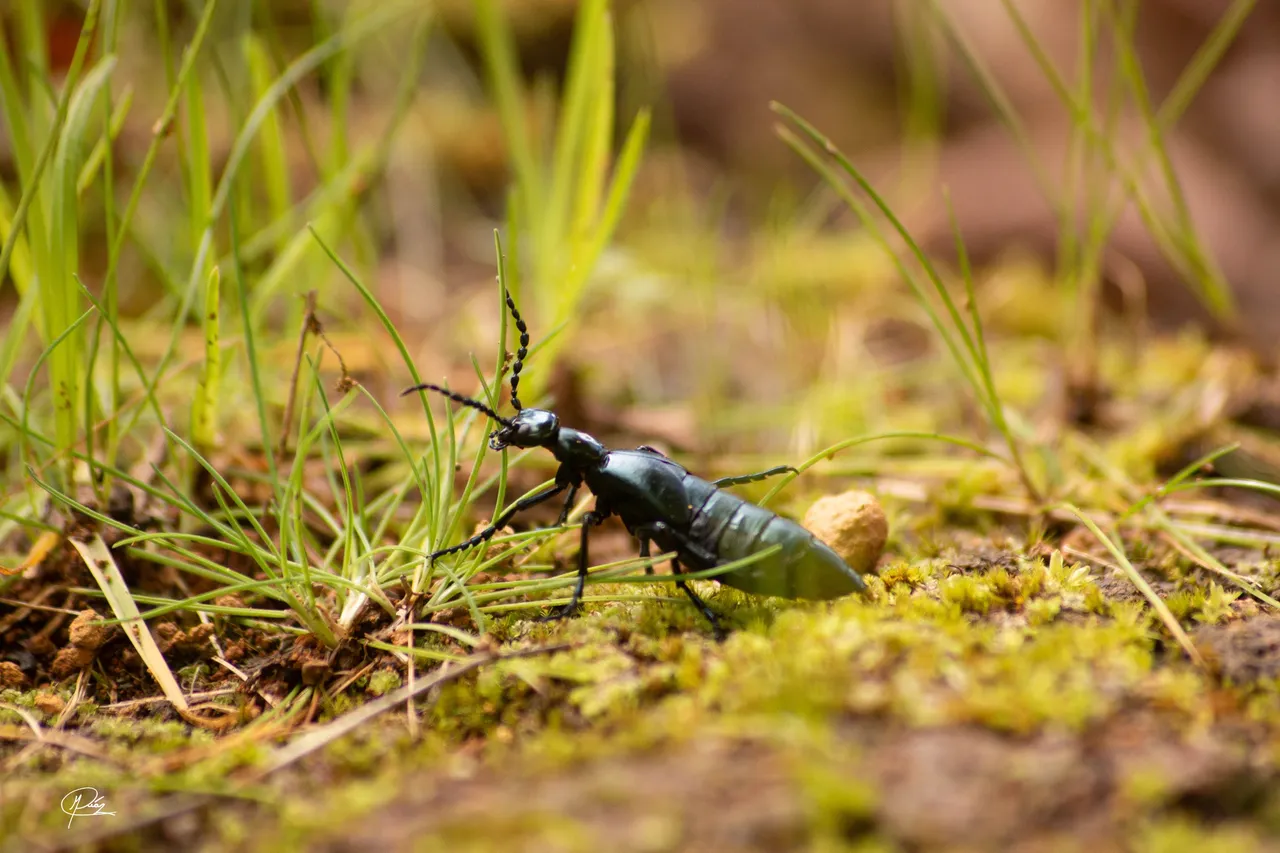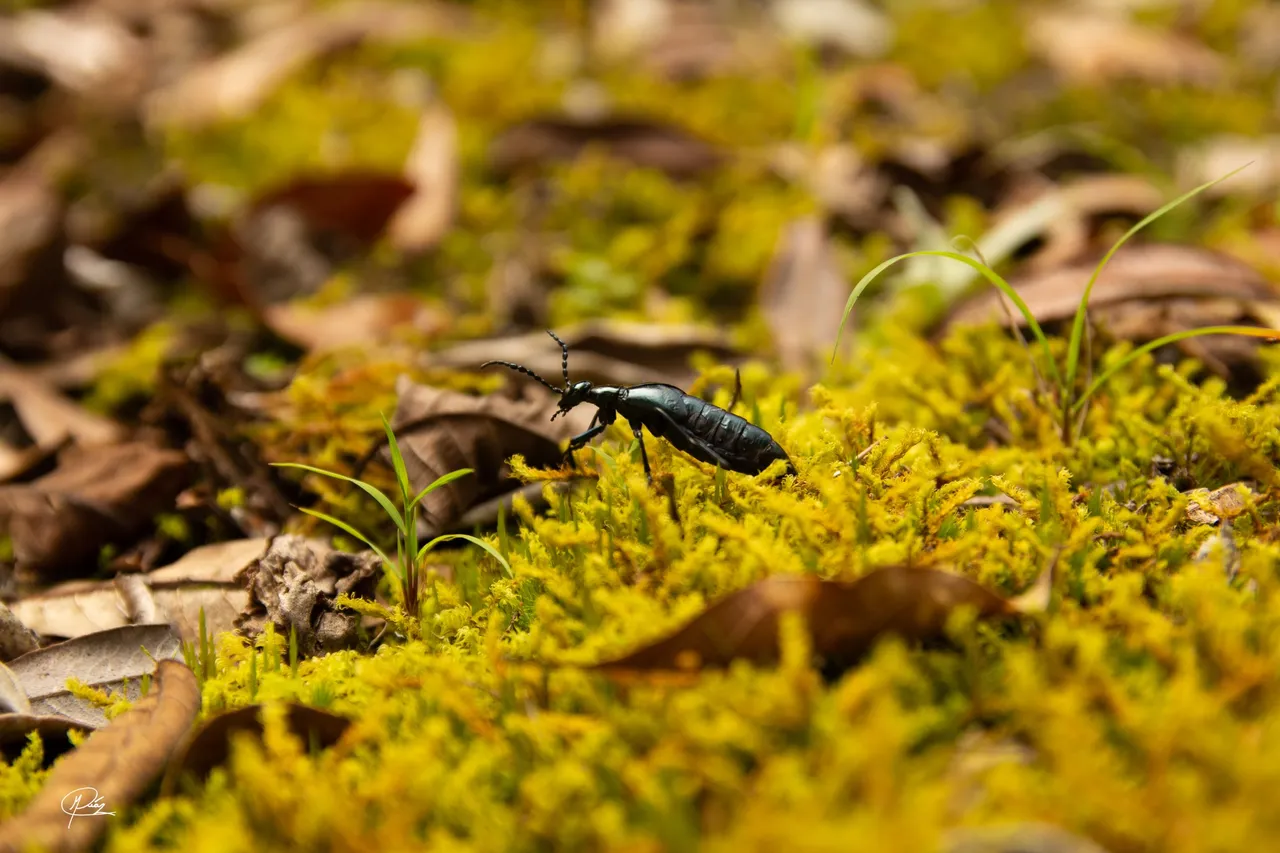
Today I want to share with you about a truly curious insect, which is not very common to observe and can easily be confused with something else. I discovered it by accident while I was trying to photograph mushrooms, I threw myself to the ground to get a different perspective and that caused my little friend to come out of his lair. He was not so small, because he could measure the size of a little finger, he moved slowly and that allowed me to take several photographs. Upon returning home, I set out to identify him and I must confess that it was not an easy task, but in the end I managed to find the information.

It is a species that belongs to the coleoptera group, specifically to the Meloidae family. These insects are characterized by being poisonous since they produce a very powerful toxin called cantarina (formerly used as an aphrodisiac), which can cause lesions on the skin of other animals. Poisoning has even been observed from cattle that accidentally consume some of these dead insects.

The larvae of these insects are usually predatory and attack bees, wasps and parasitize the eggs of some species of crickets. Adults come out to feed on flowers and leaves.

The specific genus Meloe constitutes about 150 species, and they are commonly known as oil beetles or oil beetles. This genus does not have wings so its elytra (structures that protect the wings from insects) are greatly reduced. This genus is better known in the Mediterranean area and although a large number of them live in Costa Rica, they are not easy to observe in the tropical forest.

VERSIÓN EN ESPAÑOL
Hoy les quiero compartir sobre un insecto verdaderamente curioso, el cual no es muy común de observar y puede ser fácilmente confundido con algo más. Lo descubrí por accidente mientras yo intentaba fotografiar hongos, me lance al suelo para tener una perspectiva diferente y eso provocó que mi pequeño amigo saliera de su guarida. No era tan pequeño, pues podía medir el tamaño de un dedo meñique, se movía despacio y eso me permitió hacer varias fotografías. Al regresar a la casa me di a la tarea de identificarlo y debo de confesar que no fue un atarea fácil, pero al final logré encontrar la información.

Es una especie que pertenece al grupo de lo coleópteras, específicamente a la familia Meloidae. Estos insectos se caracterizan por ser venenosos ya que producen una toxina muy poderosa llamada cantarina (antiguamente usada como afrodisíaco), la cuál puede producir lesiones en la piel de otros animales. Incluso se ha observado la intoxicación del ganado que accidentalmente consume algunos de estos insectos muertos.

Las larvas de estos insectos suelen ser depredadoras y atacan a abejas, avispas y parasitan huevos de algunas especies de grillos. Los adultos salen alimentarse de flores y hojas.

El género Meloe en específico constituye cerca de 150 especies, y son conocidos comúnmente como aceiteras o escarabajos de aceite. Este genero no tiene alas por lo cual sus élitros (estructuras que protegen las alas de los insectos) se encuentran muy reducidos. Este género es más conocido en la zona mediterránea y aunque en Costa Rica habita un gran número de ellos, no son fáciles de observar en el bosque tropical.
